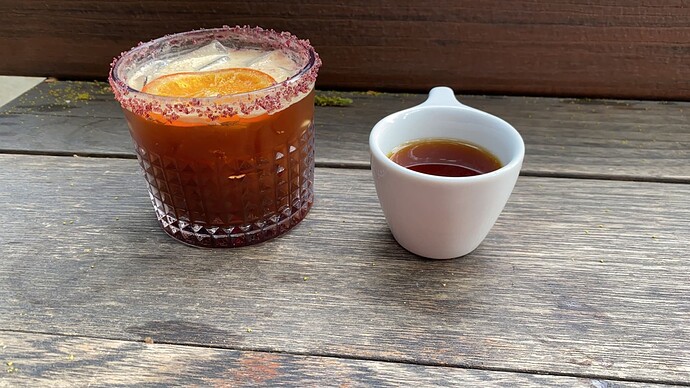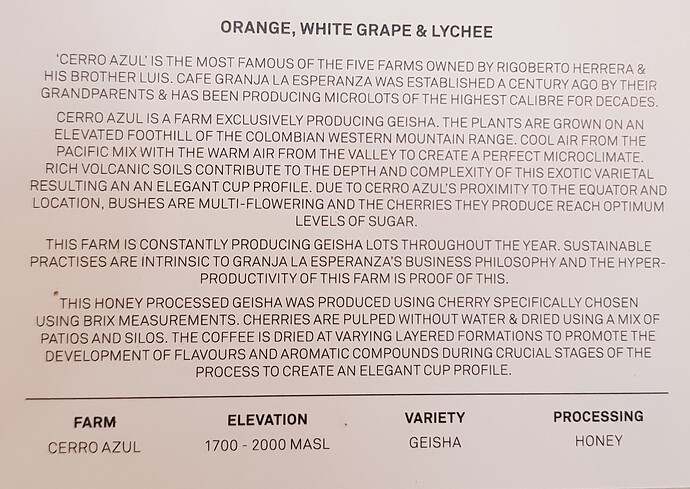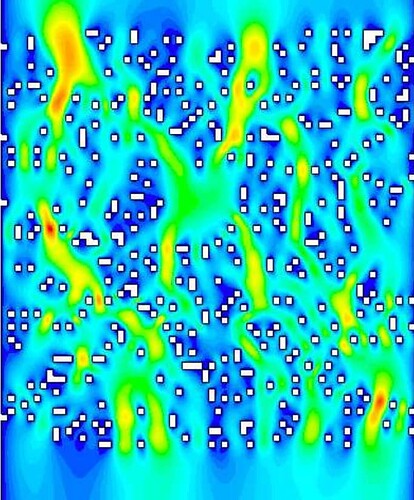blind taste tests or gtfo
So. I’ve just come back from a “Home Coffee: filter coffee” course.
There were just two of us there with the instructor. He took us through french press, aeropress and pour over.
Some good info and discussion. He was able to talk through a lot of things.
One realization. I’m still probably making too small adjustments as I dial in a bag. If i make bigger adjustments I’m gonna get a clearer idea of what’s going on
Secondly. Maybe my tastes are weird, but all of the cups he made were really weak and watery. Maybe I just enjoy much stronger cups? Even the ones he said were stronger were really bland to me.
Do you have any idea how much I’d bet against someone being able to win a triangle test on a 30s vs 35s bloom?
Depends on what you mean by strength. The definition is technically precise in coffee brewing but people tend to use it colloquially in a lot of different ways. I prefer tea-like cups with thin body but the people I’ve served them to who normally drink McCoffee definitely did not think they were bland. In fact, the reaction is usually the opposite–that the coffee is too exotic and overwhelming as a daily drinker. Maybe it was just that the coffee this guy was using was actually bland?
*If you really desire strong coffee as in high TDS, then you should probably be looking at coffees with low acidity, i.e., not light roast single origins with some rare exceptions (some Brazilian & Asian Pacific coffees), because the problem is you’ll need to use a lower ratio and that’s very often gonna come out sour. Also consider that V60 may not be the best brewer for you since it’s all about clarity and separation, and people are mostly using ratios of 16:1 +/- a unit or two. For instance, I’ve basically solved this gesha now, and it’s very sensitive to being brewed at 17:1 +/- a half unit in order to achieve the correct profile.
And just as a general thing, the very acidic LRSOs are the hardest coffees to brew because the parameter windows are narrower, and when you miss, you can miss by a lot and end up making a disgustingly sour mess of a cup. It’s way harder to botch a ~medium roasted coffee with a hint of fruit that isn’t acid dominant.
thoughts on coffee mocktails? had this in the ‘fancy’ coffee place in Davis:
(the little cup is not part of the drink)
‘GREAT DAY’ MOCKTAIL - Dharma Espresso, Topo Chico, house-made Orange & Vanilla syrup, a Wild Blueberry Sugar rim, and topped with an edible Candied Orange slic
This stuff is really hard to discuss over the internet with no shared reference points.
I think it’s a couple of things. I might be over extracting my cups a fair bit, compared to what a standard taste is looking for.
Also. My tastes always run pretty sour so maybe I’m looking for that as well.
Tried a first v60 this morning. Not terrible, but definitely a little under. But I enjoyed it. A hoffman recipe that drained in 2 minutes 30. So probably a little fast.
Going to stick with the v60 for a while and experiment a bit.
If you like sour then the sky is the limit on some of these light roasts.
I used to be a bartender and was really into cocktails at one time. Haven’t had anything like this though and I’m guessing it would be sweeter than I could handle. Don’t really like things with syrups.
Yeah I just don’t know either. Extra consistency would be nice but I think there’s a lot of value in precision. I think that’s the main draw to the ditting for me, having grind steps defined in microns.
But it’s probably not great ROI. I’ve been brewing Patrik Rolf’s stagg x recipe and it’s getting consistent and very good results for me. So I’m thinking there are lots of improvements I can get with different brew devices and recipes
There should be a way to figure out microns for any of the designs that work like the Ditting or EK. I’d have to look at a teardown for the Ode but pretty sure it would be possible to figure out and then you could just relabel your dial.
Yeah something like that could work for the Ode but not for the forte due to the overlap right?
Right the Forte has a very odd grind adjustment mechanism. One of the engineers that figured out the hyper alignment stuff also figured out that the micron size change between micro adjustments isn’t consistent throughout the range due to how the cam rotates on an arc.
So is the Ditting just calibrated to tell how many microns you’re moving on the dial? Like, a setting of 1 would be 100 microns and going up to 2 would be 200 microns or whatever? I guess that might explain why their adjustment knob assembly is perpendicular to the burr plane (which is vertical and something that makes it different from the EK and other commercial builds of that type).
Massive success on the home coffee front this morning.
Made a 2 cup v60 for the first time because I was in a rush. (Normally I do a different one for me and Mrs R)
Mrs R picking up tasting notes of kaffir lime leaves in the coffee and liking it.
She hasnt really been on board the hipster coffee journey so far, so I think this is a breakthrough.
On another note. 2 cup brewed very differently. I went a course grind but still the drawdown was much slower by about a minute.
God I miss decent coffee. I’ve been in hotels for like 10 days now. The one coffee shop I went to was no bueno. My wife got me Dunkin’ today…
I have my commandante and some beans but you know how when you shower at a hotel and it completely dries out your skin? Well I always thought it was the soaps and shampoos they give you but it turns out it’s something about the water. Using the same exact soaps I use at home without issue and still getting that dried out feeling. And that water is awful for coffee.
Have any of you ever had an iced coffee or cold brew that compares favorably to LRSO normal brews? I’ve never had a “good” one of either type and kind of curious if they even exist. Hard requirement that it must be served black.
Just tried a Geisha at a cafe.
Very interesting. Super complex. Perhaps a little lighter than my preference.
I watched the pour. I’m not so sure about it.
She seemed to pour mostly in the middle. With no effort to get the coffee grounds round the filter. Kind of ended with a cone shape bed.
I’m gonna buy some and try for myself. See if I can do better.
Several methods do primarily center pours. The most common one I know of is osmotic flow described here BREWING GUIDE | CAFEC - SANYO SANGYO | Your tools really give life to your roasted coffee beans? CAFEC has the best answer.
Interesting idea. I’m not sure osmosis works like that tho. Without a membrane?
Reading a little. Seems like maybe it does a good job of evenly extracting but needs more beans? Maybe it’s even across 75% of the grounds and the rest just serves to help keep the flow and bed structure consistent?
Interesting article on how water flows through the coffee bed.
Suggests that a faster flow MAY result ina more even flow, up to a point.
The doming center pour is the O.G. method of pour over coffee, having existed for much longer than the Hoffman-type methods people use now. Cafec calling it “osmotic flow” is either something lost in translation or an attempt to put a marketable name on it. Look at the brew instructions on any pack of Hario V60 filters [spoiler: it’s center pour and always has been]. Anecdotally, it seems totally fine as a method once dialed in, and I definitely have more confidence in it brewing a new coffee blind than going with a high agitation method.
Whether it makes a difference in your coffee is really tough to say unless you are brewing side-by-side comparisons. There’s even a problem with that, because setting all of the other parameters equal (grind size, water temp, ratio) isn’t a meaningful comparison, so you’d really need to dial in two different sets of parameters that are optimal with respect to the pouring technique and then compare.
Or another way to think of it is you’d need to exactly match extraction yields between two methods and compare, but that’s gonna be tough because unless you have a benchtop lab refractometer ($$$$) that measures to 0.01% Brix / 0.00002 nD specific gravity, the accuracy won’t be high enough to make that determination. The handheld units that coffee people use for this, which merely cost many hundreds of dollars instead of thousands, are all at least one significant digit worse than that and therefore not capable of measuring this with any meaningful degree of accuracy.


